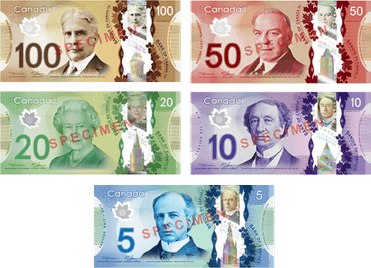The exchange rate of the Canadian Dollar (CAD) against other currencies is influenced by a variety of factors. Here are key elements that impact the fluctuations of the Canadian Dollar:
-
Commodity Prices:
- Canada is a major exporter of commodities, particularly oil and natural resources. The Canadian Dollar is often sensitive to changes in commodity prices. When commodity prices, especially oil, rise, it tends to strengthen the Canadian Dollar, as it boosts the country’s export earnings.

- Canada is a major exporter of commodities, particularly oil and natural resources. The Canadian Dollar is often sensitive to changes in commodity prices. When commodity prices, especially oil, rise, it tends to strengthen the Canadian Dollar, as it boosts the country’s export earnings.
-
Interest Rates:
- Interest rate differentials between Canada and other countries can influence the Canadian Dollar’s value. Higher interest rates in Canada relative to other countries may attract foreign capital, increasing demand for the Canadian Dollar.
-
Economic Indicators:
- Economic indicators, such as GDP growth, employment data, and manufacturing output, can impact investor confidence and influence the Canadian Dollar’s strength. Positive economic data may strengthen the currency, while negative data can lead to depreciation.
-
Global Economic Conditions:
- The overall global economic environment can affect the Canadian Dollar. Economic uncertainties, trade tensions, and changes in global demand for commodities can influence investor sentiment and capital flows, impacting the Canadian Dollar.
-
Government Fiscal and Monetary Policies:
- The fiscal and monetary policies of the Canadian government and the Bank of Canada (BoC) play a crucial role. Policies related to interest rates, inflation targeting, and fiscal stimulus measures can impact investor perceptions and influence the exchange rate.
-
Trade Balances:
- Canada’s trade balance, or the difference between exports and imports, directly influences the demand for the Canadian Dollar. Trade surpluses generally support the currency, while trade deficits can contribute to depreciation.
-
Political Stability:
- Political stability is important for investor confidence. Political uncertainties or instability can lead to capital outflows and currency depreciation. Conversely, stable political conditions can attract foreign investment and support the Canadian Dollar.
-
Speculation and Market Sentiment:
- Traders and investors often react to news, economic data releases, and changes in global sentiment. Speculative activities and market sentiment can cause short-term fluctuations in the Canadian Dollar.
-
Bank of Canada Interventions:
- The Bank of Canada occasionally intervenes in currency markets to influence the Canadian Dollar’s value. While direct interventions are less common, the central bank’s communication and policy decisions can impact market expectations and the exchange rate.
-
Global Trade Developments:
- As a trade-dependent economy, developments in global trade relations, particularly with the United States, can significantly impact the Canadian Dollar. Changes in trade agreements and tariffs can influence the currency’s value.
Understanding the dynamic interplay of these factors is essential for assessing the direction and magnitude of fluctuations in the Canadian Dollar. Currency markets are complex, and multiple variables can interact to influence exchange rates. As with any currency, the value of the Canadian Dollar is subject to change based on economic conditions and external factors.









